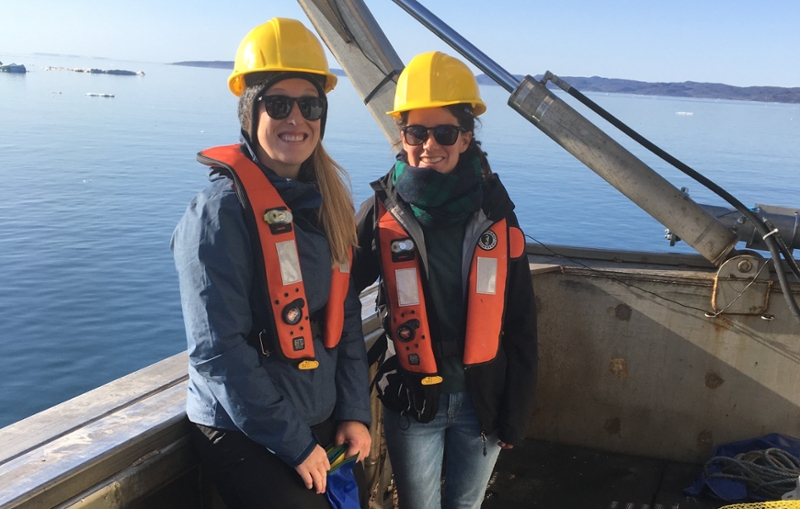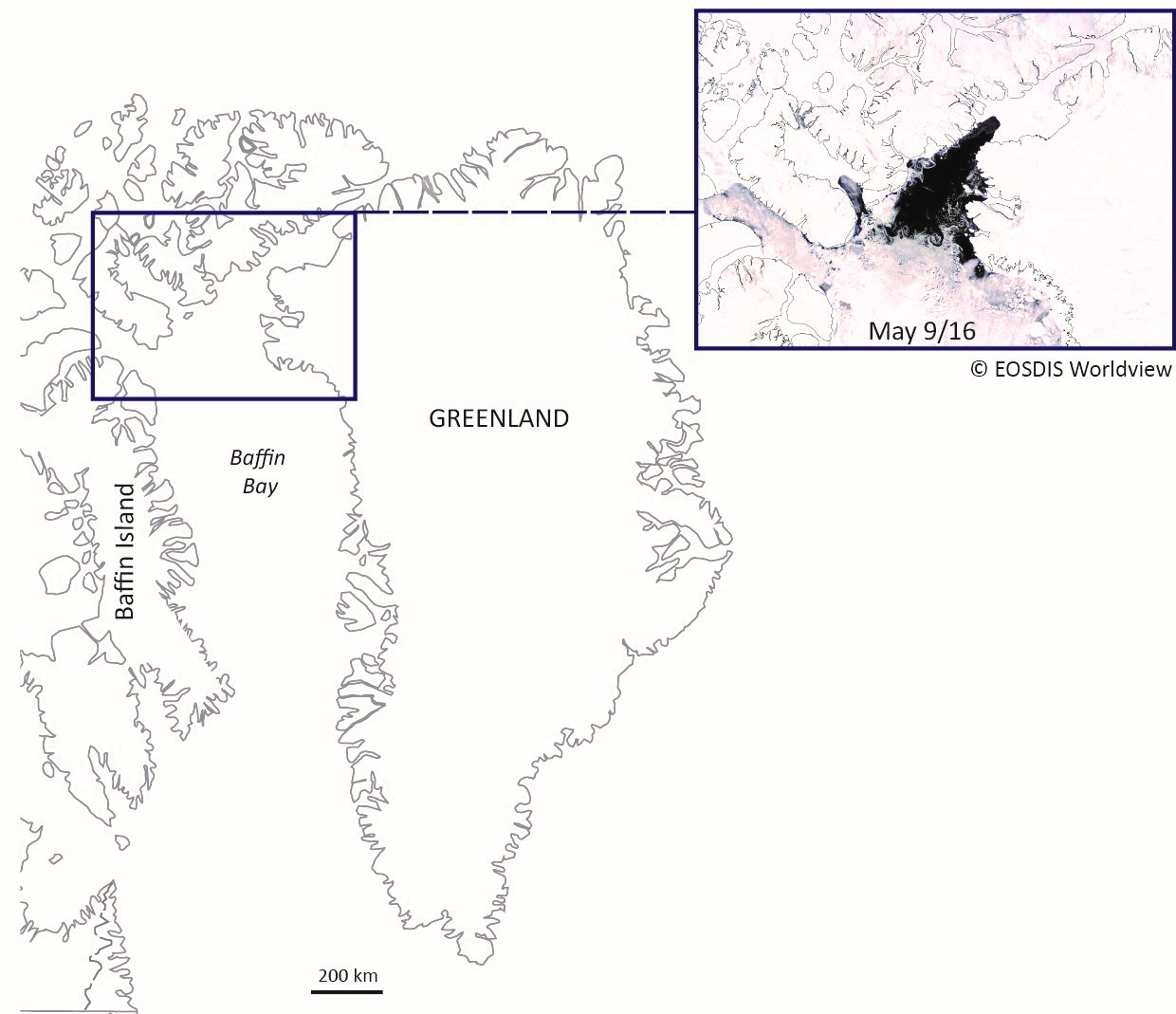UNB graduate exploring biodiversity in the Arctic - NOW and for tomorrow
Author: UNB Research
Posted on Feb 23, 2021
Category: Research

UNB's research community is part of a larger, global community of researchers, innovators and leaders driving positive change. These connections with other specialists in their field are at the heart of knowledge sharing.
UNB alumna Kelsey Koerner recently presented on her master's research at the Arctic Change 2020 conference; we asked her to introduce us to her and to her work, and about participating in conferences like this.
Who are you?
My name is Kelsey Koerner, and I am a paleo-oceanographer and palynologist-in-training! I obtained both my bachelor of science with honours and my master of science (2020) in Earth Sciences from UNB.
I am currently doing my PhD at the Université du Québec à Rimouski in Rimouski, Québec, with co-supervision from Dr. Audrey Limoges, Assistant Professor in the Department of Earth Sciences at UNB.
My plan is to continue with the work from my master’s, where our research raised more questions about my study area. The next step is to get more data from the northern Baffin Bay region in order to better understand the system’s regional response to climatic-driven changes in the past, present and hopefully into the future.
How did you get involved in this field?
I decided to pursue earth sciences because I really loved the idea that it encompasses multiple scientific fields. I find that it’s really a multi-disciplinary domain, where I get the opportunity to use a combination of geology, chemistry, biology, and oceanography in my research. I also really enjoy understanding how the Earth’s processes work, and, at a bigger scale, how the Earth fits within our solar system.
What are you working on, currently?
My current work seeks to better understand past changes to sea-surface conditions in northern Baffin Bay. The field area is the North Water (NOW) Polynya, or Pikialasorosuaq, which is Greenlandic for the Great Upwelling.
 Polynyas are very unique features of the north and south poles, characterized by open water in a region where we would expect to see sea ice. The NOW in particular is very biodiverse as a result of these open water conditions and is also very sensitive to oceanographic and atmospheric changes. It also is a very important source of resources for the surrounding communities in Greenland and Canada and has been for millennia.
Polynyas are very unique features of the north and south poles, characterized by open water in a region where we would expect to see sea ice. The NOW in particular is very biodiverse as a result of these open water conditions and is also very sensitive to oceanographic and atmospheric changes. It also is a very important source of resources for the surrounding communities in Greenland and Canada and has been for millennia.
The objective of my project is to assess changes to sea-surface conditions over the last 4,000 years to better understand the NOW’s response to climate variability. By looking into the past, we can better understand what is happening in the Arctic in the present.
We do this by analyzing sediment cores, which contain information about past environments. In my project I use small fossils (called microfossils) of organisms that once lived at the sea-surface to infer information about the changes to the surface water conditions such as the temperature, salinity and sea-ice cover through time. These small microfossils are very abundant and can be preserved in the sediment for a very long time (hundreds of thousands of years or more!).
What is significant about this work?
What we see from my research is that in the past 50 years, the assemblages and composition of the microfossils change quite dramatically compared to changes that occurred during the last 4,000 years. What this means is that the rate at which recent changes in sea-surface conditions have occurred in this region of the Arctic has no comparable analogue in the past 4,000 years. So even at the sea-surface level we can see that the current climate warming has important implications for the oceanography and food web of the NOW polynya region.
Polynyas are often referred to as the ‘canaries in the coal mine’ for climate change in the Arctic because they are so sensitive to any disruptions. So, by understanding how climate change is impacting these regions, we can better understand what could happen in the Arctic more broadly.
On a global scale, the Arctic is rapidly changing, and the changes there will impact the rest of our planet. By understanding how the Arctic is responding to current climate changes, we can have a better idea of how it may impact distant regions.
How is the Arctic Change conference significant to your work?
The Arctic Change conference is a conference hosted by Arctic Net, which is the largest collaborative network of Arctic researchers in North America. What is really nice about this conference is it brings together researchers, policy makers, and northern communities from all over the Arctic. So, presenting my research here allows for input from many perspectives.
Arctic Change is hosted every three years, and because of its size, a large number of Arctic researchers are present to discuss recent results. Arctic research involves multi-disciplinary collaborative work with other scientists, and, importantly, with northern communities; this conference allows for meaningful discussion and really fosters this collaboration. It’s also a great way to catch up with other colleagues in the field as well as to establish new relationships with people in Canada and all over the world.
What advice would you give to people interested in oceanography and earth sciences?
It’s never too early to get involved with something that you are passionate about! For those still in high school or middle school, or who are generally interested in the field, there are many good movies, books, documentaries to watch and learn more about oceanography.
Some of my favourites are the documentaries One Strange Rock, Blue Planet, and the book Lab Girl by Hope Jahren.
If you are a post-secondary student, take a look at the classes offered in the realm of oceanography or climate change. Contact professors doing research in these areas and see if you can do an independent study or research project. If you have TAs working in an area you find interesting, ask them about it!
More information:
Dr. Audrey Limoges (orcid)| Department of Earth Sciences | Research at UNB | Graduate Studies at UNB